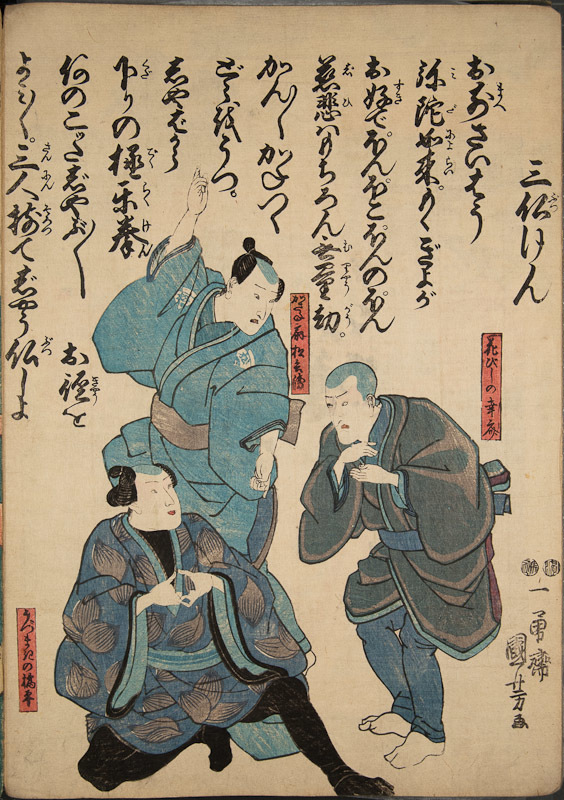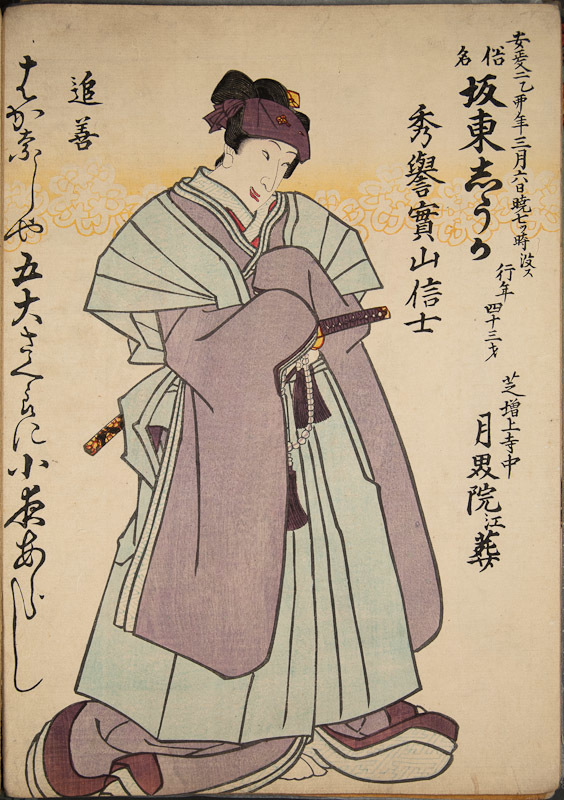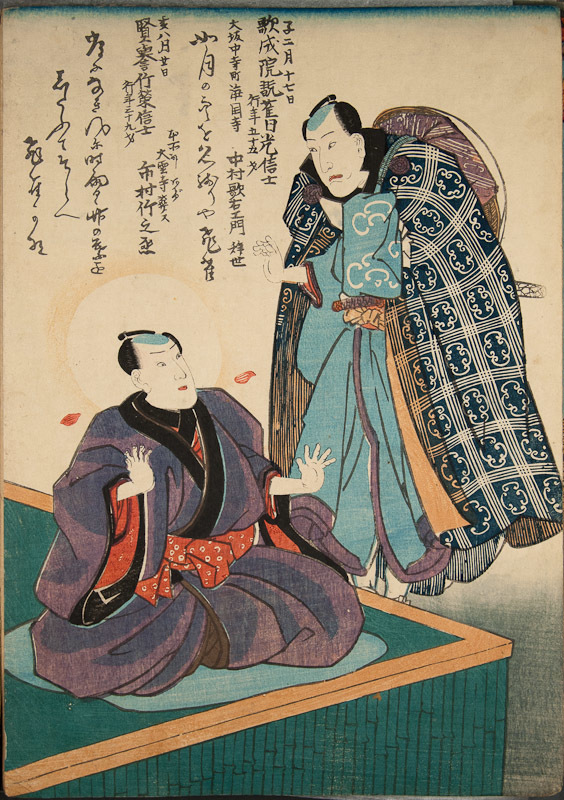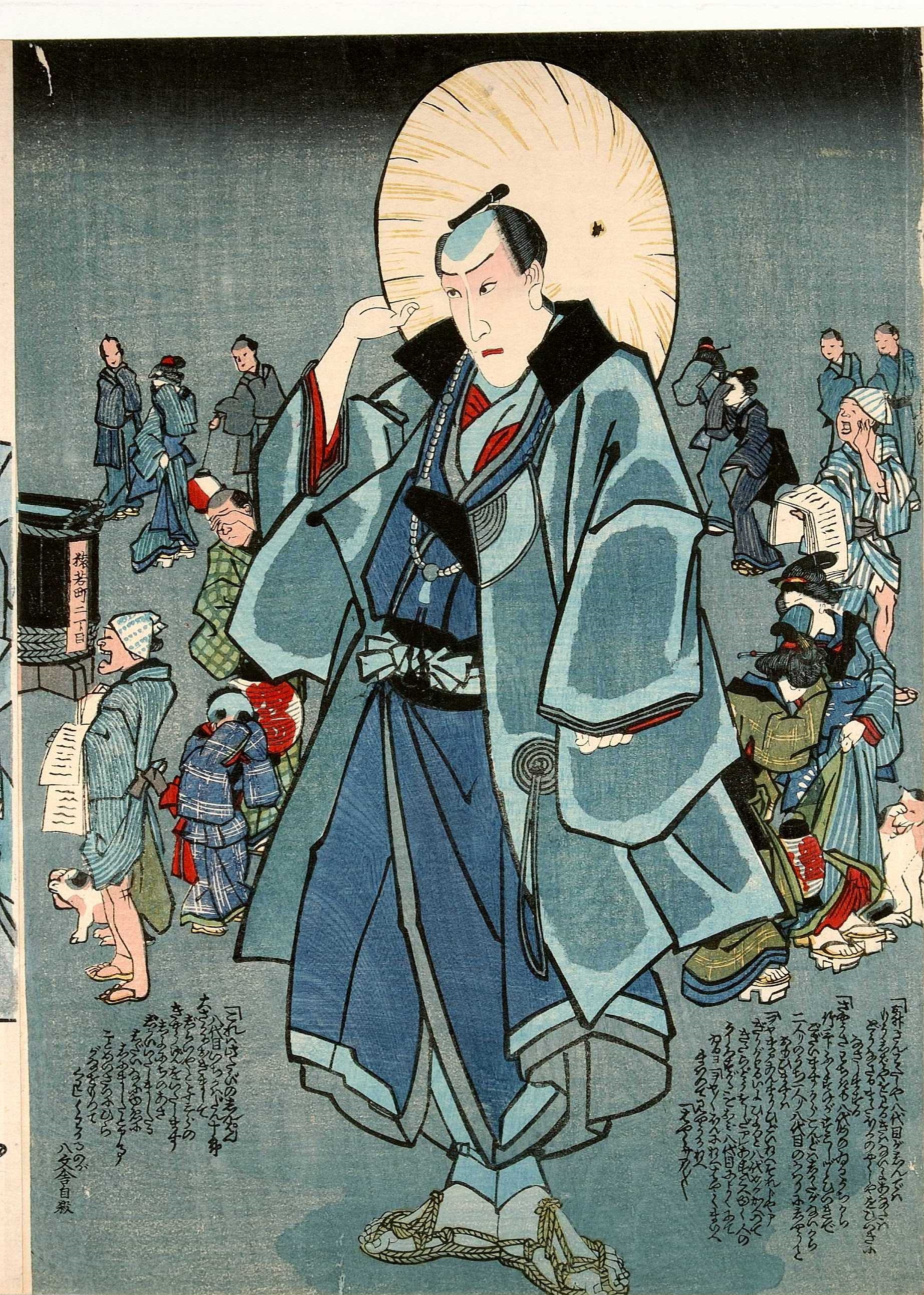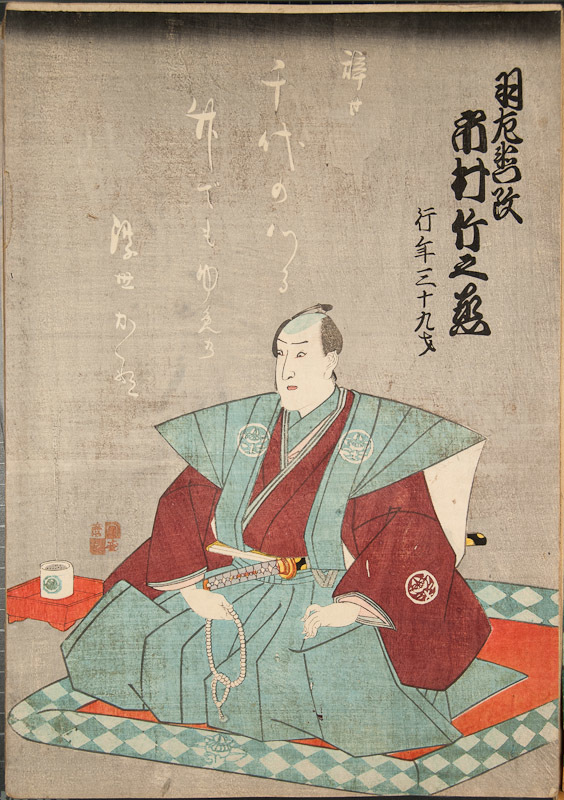Biblioteca Complutense
The energy and charisma of the living characters are transferred to the deceased character in a very free and sometimes humorous way. The title 三仏けん, Sanbutsuken, refers to the way in which the three actors are playing, already as Buddhas, to a game similar to rockpaper-scissors.
お前さいはう弥陀如来。もくぎよがお好で。ぽ んぽこぽんのぽん 慈悲はもちろん無量劫。か ん/\かねつくどらをうつ。しやばから下リの 極楽拳 何のこッたじやぶ/\ お経をよみ/ \。三人揃てじやう仏しよ
[Transcription: Akama Ryō]
You are Amida Nyorai. You like the [musical instrument] mokugyo. Pon poko no pon (drum beating), compassion is decisively immeasurable. The Buddhist gong resonates: kan, kan. A heavenly hand game, that originates in this world. What on earth are we doing, reading sutras? Let us three rest in Buddha’s peace!
[trans. Mª Dolores Rodríguez del Alisal]
- 木魚 mokugyo: a round and flat instrument, with a side opening, that was played in Buddhist ceremonies.
- 金築どら kanetsuku dora: Buddhist gong.
- ポンポコのポン pon poko no pon: a Japanese onomatopoeia that expresses the sound of the Japanese drum.
In this copy, belonging to the UCM collection, the same as in the copy in the University of Waseda, the garments are patterned and the cartouches holding the names are red. In the copy kept in the Nationaal Museum van Wereldculturen (Rijksmuseum Volkenkunde, Leiden), the garments do not have patterns and the cartouches are colourless. In this copy, none of the heads have been retouched, as is the case in the copy held in the Fine Arts Museum in Boston. Therefore, it is understood that both the Waseda and the UCM copies are earlier versions.
This makes us think about the way in which these commemorative prints established a new type of relationship with the public. They are presented with the historical identity as opposed to the theatrical personality of the subject. They reveal the man who hides behind the hero, the villain, or the lady.
In this case Bandō Shuka, an actor who played female characters, is dressed with a kamishimo and a sword, appropriate to his gender. However, a kimono adequate to his female impersonations appears below his kamishimo.
One of the actors is dressed as a traveler or pilgrim, while the other is already sitting in the lotus position, with a halo and some lotus petals at the sides. This implies that they will attain Buddhahood soon after their life as actors, or precisely because of their success as kabuki actors.
In this case the actor appears with a pilgrim’s hat placed in a way that resembles the golden nimb linked in sacred images to Buddhahood.
The actor Ichikawa Danjurō watches how his decease is announced and how people lament his disappearance from the stage.
ESTA IMAGEN FALTABA EN LA VERSIÓN EN INGLÉS, ¿LA QUITAMOS?
En el texto escrito puede leerse el siguiente poema:
千代のつる竹でもゆめの浮世かな
Se puede traducir como "Incluso el bambú que vive mil años es solo un sueño efímero en este mundo flotante". Es un ejemplo de cómo su autor expresa la idea del mundo como un lugar transitorio y efímero, y cómo la naturaleza misma está sujeta a la impermanencia y la transitoriedad. La imagen del bambú, que a menudo se asocia con la longevidad y la durabilidad, se utiliza aquí para subrayar la fugacidad de la vida y la importancia de apreciar cada momento.
